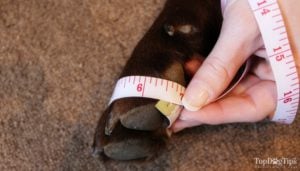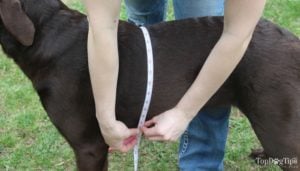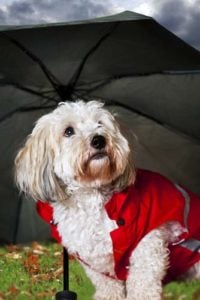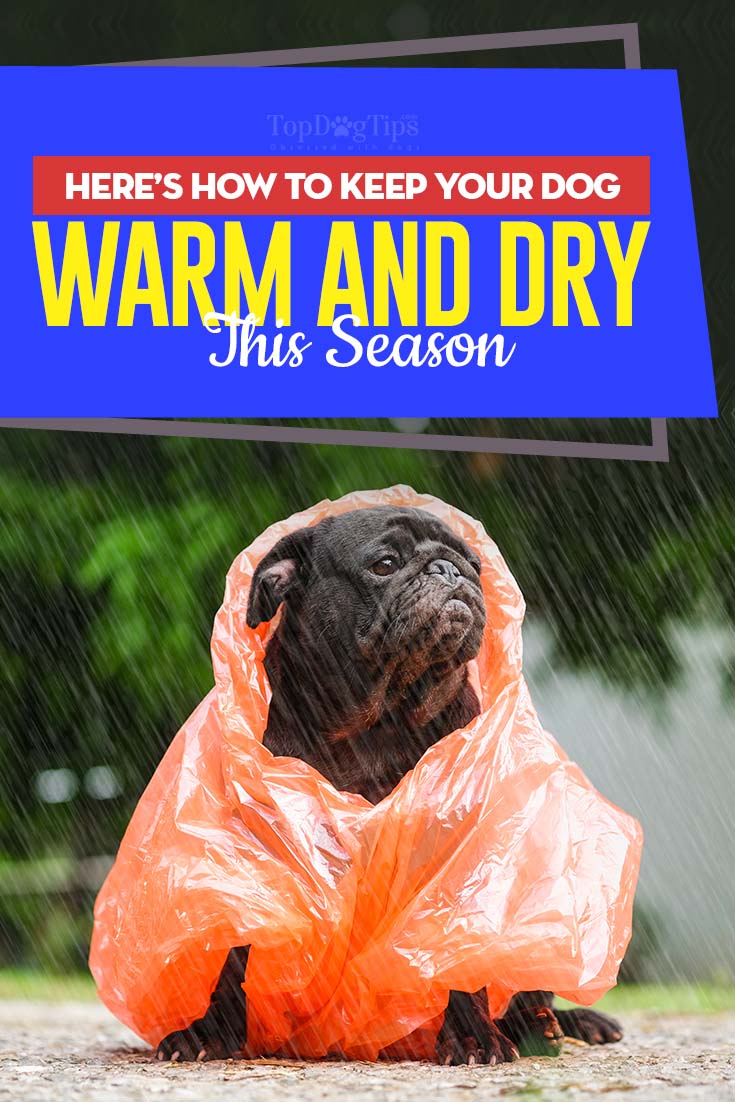Summer is long over, and it's the cold and rainy season's time. While most pet owners keep their pets indoors, there's no avoiding walking them in the rain, snow or when it's really cold outside. Dogs are just as susceptible to low temperatures as we are. And while not all breeds needs extra protection, it's best to be prepared and keep your dog warm and dry to avoid health complications.
1. Keep Non-Winter Breeds Out of Low Temperatures
Our canine companions are resilient beings, but they still have their limits and do get cold late fall and winter weather. Unless your dog has thick undercoat, temperatures between 40° and 20° degrees can make your pup uncomfortable. If you do need to take them out for a longer period of time, bring some winter clothing with you.
2. Use Booties
The best protection against cold are dog booties. Depending on where you live, the ground is likely to be cold around this time of year. Your pup has sensitive paw pads that respond to both hot and cold surfaces, so they need something to protect their feet in extreme temperatures.
Dog shoes are just a comfy pair of shoes your dog can wear to create a barrier between their pads and the cold ground. They might do some high-stepping for the first few minutes of wearing them, but once your Fido gets used to their new gear they won’t even notice they’re there.
Dog shoes have their own specifications:
Shoes or booties should fit securely, but they shouldn’t be so tight that your dog is unable to extend their toes. When a dog’s foot is pressed against the ground, their pads spread out and help them balance.
High stepping for the for first 30 minutes to an hour of wearing them is normal, but if they appear uncomfortable for longer than that, you may need another size. Here are guides with explainer videos on how to measure your pup for boots and how to put them on and ensure your pooch feels comfortable.
Booties for dogs come in a variety of materials including fleece, leather, suede, and nylon. It’s up to you to decide which of these is best for your pet, but some types of dog booties are specifically designed for cold winter weather (see below) and specific terrain.
SEE THESE: The 13 Best Dog Boots for Winter Weather
3. Leave Your Pup Inside During Rain Showers
In the summertime we don’t really mind if our dogs get a little wet during a walk or a run, and allow them to have a fun time. They dry up soon enough thanks to the warmth of the sunlight and there's no risk of hypothermia. During autumn weather, however, this could put your dog at a serious health risk. This is especially true during the evening when the temperature drops even further.
4. Get Your Dog a Coat
While double coated adult dogs are more protected from cold autumn and winter weather, smaller pups, senior dogs and breeds with less fur may not be able to stay as warm as a Husky or a Great Pyrenees. You don’t have to buy a full body jumper though to keep the dog warm and dry – there are coats that have a strap around the chest and belly. They only cover the top half of your dog’s body for easy break-away in case they get too warm.
 Consider looking for winter dog coats that are water resistant and are machine washable to keep it fresh and ready to use. Like our clothing, your dog’s coat will need to be washed or it will start to accumulate moisture and smell like a dirty towel. Most pet owners only use them for extended long walks with the dog.
Consider looking for winter dog coats that are water resistant and are machine washable to keep it fresh and ready to use. Like our clothing, your dog’s coat will need to be washed or it will start to accumulate moisture and smell like a dirty towel. Most pet owners only use them for extended long walks with the dog.
Similarly to booties, while jackets for canines are incredibly convenient, make sure that you get the right size for your dog. Zippers and Velcro can dig into your pet’s skin and cause chafing if they don’t fit properly. Coats that are too tight also have the potential to catch and pull dog's hair, so watch out for this as well. Here's a guide on how to measure your pooch and put winter clothing on him.
3. Dry Them Off After Coming Inside
Even if it doesn't rain or snow, your dog might be wet. It’s not uncommon for dogs to pick up moisture from the ground after going for a walk, or even just going outside to use the bathroom. If this sounds like your fur kid, make sure to towel off your pup's feet, legs, and belly to ensure that mud or water doesn’t soak into the fur.
Aside from the obvious possibility of matting, water from outside usually carries just about any microbial bacteria you can think of. While they aren’t life threatening, they can irritate your dog’s skin and cause hot spots among other health complications.
6. Invest in a Dog Raincoat
You’ve got dog shoes and a jacket or coat for your dog already, and that’s great. However, just because it’s raining outside doesn’t mean it’s cold out. You don't want to insulate your dog when there's no need to yet you should protect him from heavy rain.
An umbrella works well if your dog stays right next to you on the leash, but let's be honest – that never happens. A poncho, or a dog raincoat, will keep your dog dry without causing them to overheat from extra insulation.
7. Secure Your Dog When Near Large Bodies of Water
Even if your dog is well trained and behaves like a soldier, you should still keep them on a leash if you plan to be near a lake or at the beach. There's a danger of water intoxication that many pet owners have to deal with.
Furthermore, recently news broke out about the dangerously toxic blue-green algae that lurks near large bodies of water, with many cases of poisoning among dogs. Finally, once it gets closer to the winter time you can expect to start seeing ice, and it would be awful for your dog to accidentally fall through a crack.
8. Don’t Bathe Them Outside
Since the goal is to stay warm and dry, it’s not a great idea to give your dog a bath outside in the cold weather. If you need to, give them a quick rinse off outside then get them to the tub. This way you don’t trek any real dirt or mud through your home, and you won’t have to worry about clogging your bathtub drain. Towel dry your dog until you’ve removed enough water to where it’s safe for you to brush them outside.
9. Don’t Over-Expose Your Pet to the Wind
 Cold weather is one thing, but heavy winds can slash through just about any jacket. Not to mention, your dog already has a naturally cold, wet, and very sensitive nose. Breeds like Greyhounds and Afghan Hounds need some kind of hood or barrier to protect their faces from direct contact with strong Northern winds.
Cold weather is one thing, but heavy winds can slash through just about any jacket. Not to mention, your dog already has a naturally cold, wet, and very sensitive nose. Breeds like Greyhounds and Afghan Hounds need some kind of hood or barrier to protect their faces from direct contact with strong Northern winds.
If your area is experiencing colder than normal temperatures accompanying these high winds, keep dogs indoors. The same applies for riding in cars – do not let your pooch stick the head out.
10. Your Dog's House Needs Insulation
Although it’s best to allow your dog into your home during the colder seasons, sometimes they may need to be outside while you’re away or for other reasons. There are specially designed winter dog houses that keep pets warm inside, but they can get costly.
As an alternative to buying a separate winter dog house, try to insulate your pet's current home. Place a warm, water resistant bed on top of a pile of dried hay or grass. This is one of the most effective and cost-friendly ways to keep your dog toasty and safe while they’re sleeping in their house. Alternatively, you can also get a dog house heater which may or may not be cheaper than a winter dog house.













